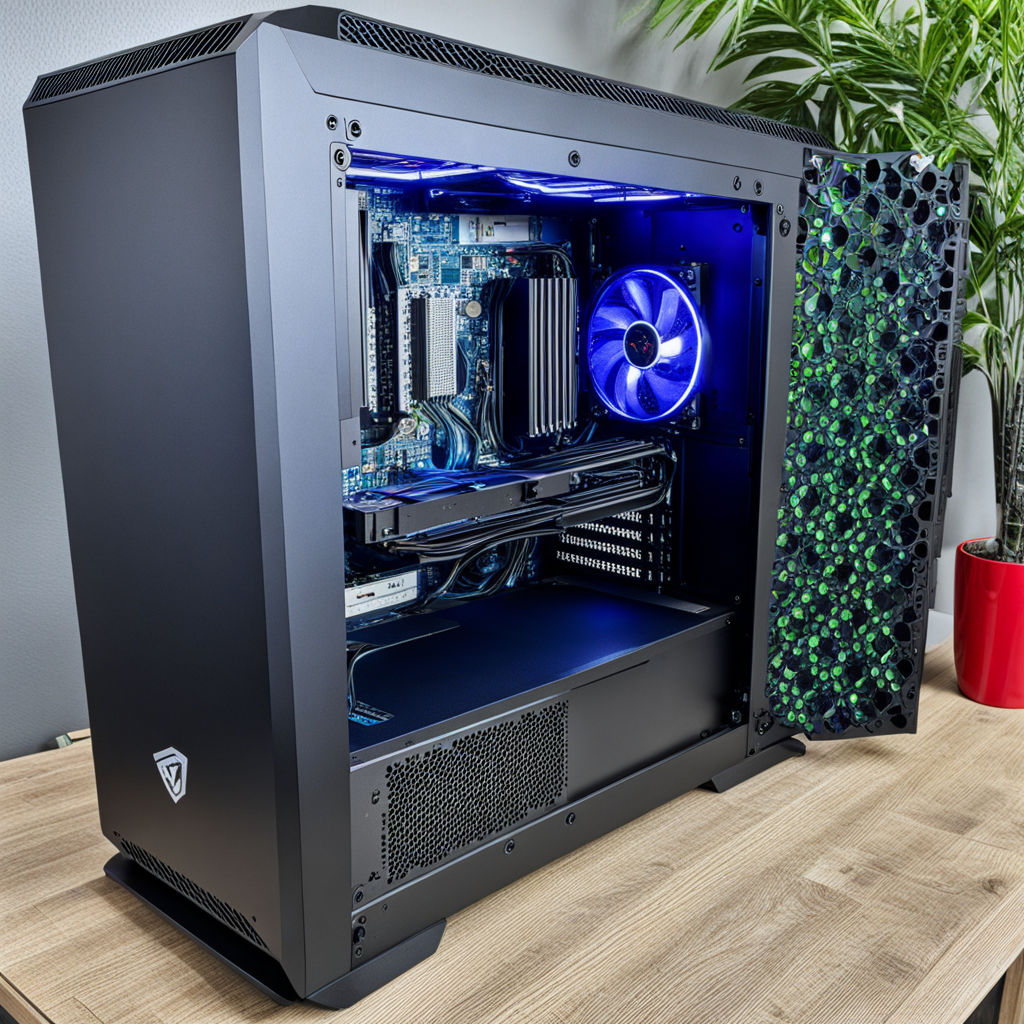Level Up Your Gaming Experience
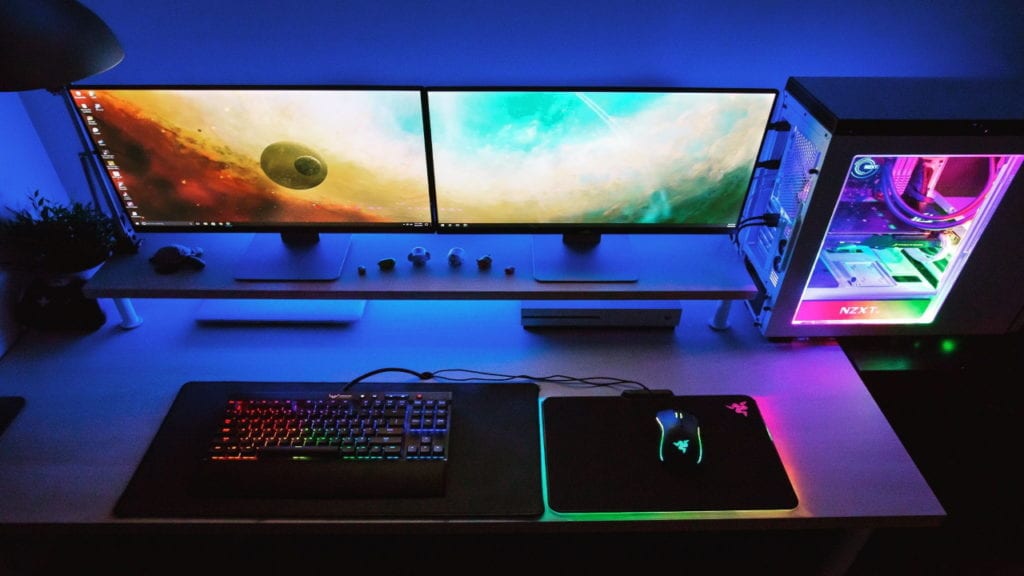
Alright, fellow gamers, it’s time to dive into the world of high-end gaming PCs! If you’ve been dreaming of buttery-smooth frame rates and jaw-dropping graphics, you’re in the right place. Let’s break down what makes a high-end gaming PC the ultimate weapon in your gaming arsenal.
What Constitutes a High-End Gaming PC?
First off, let’s talk specs. A high-end gaming PC isn’t just your average desktop with a flashy case. Oh no, we’re talking about the crème de la crème of components. Imagine a powerful processor that can handle the most intense gaming sessions without breaking a sweat. Think top-tier graphics cards that bring your games to life with stunning visuals and fluid motion. Add in high-speed RAM, super-fast SSDs, and you’ve got yourself a beast ready to take on anything from AAA titles to VR adventures.
Why Serious Gamers Need High-End Gaming PCs
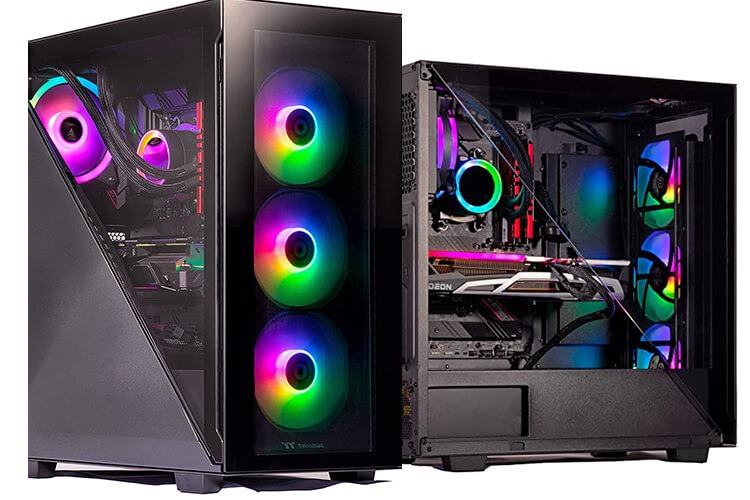
Now, why should you care about having a high-end gaming PC? For starters, it’s all about performance. When you’re in the heat of battle, the last thing you want is lag or choppy graphics ruining your kill streak. A high-end gaming rig ensures you’re always playing at peak performance. Plus, it gives you the edge in competitive gaming. Check out this guide on competitive gaming setups to see why top gamers invest in the best gear.
The Latest Trends and Technologies
So, what’s new in the world of high-end gaming PCs? One word: ray tracing. This tech is revolutionizing how we experience games, adding realistic lighting and shadows that make everything look incredibly lifelike. Then there’s DLSS (Deep Learning Super Sampling), which uses AI to boost frame rates without sacrificing image quality. And let’s not forget about the rise of VR gaming—a high-end PC is a must if you want to fully immerse yourself in virtual worlds. For the latest on these trends, visit this tech trends blog.
The Heart of the Beast – Choosing the Right Processor
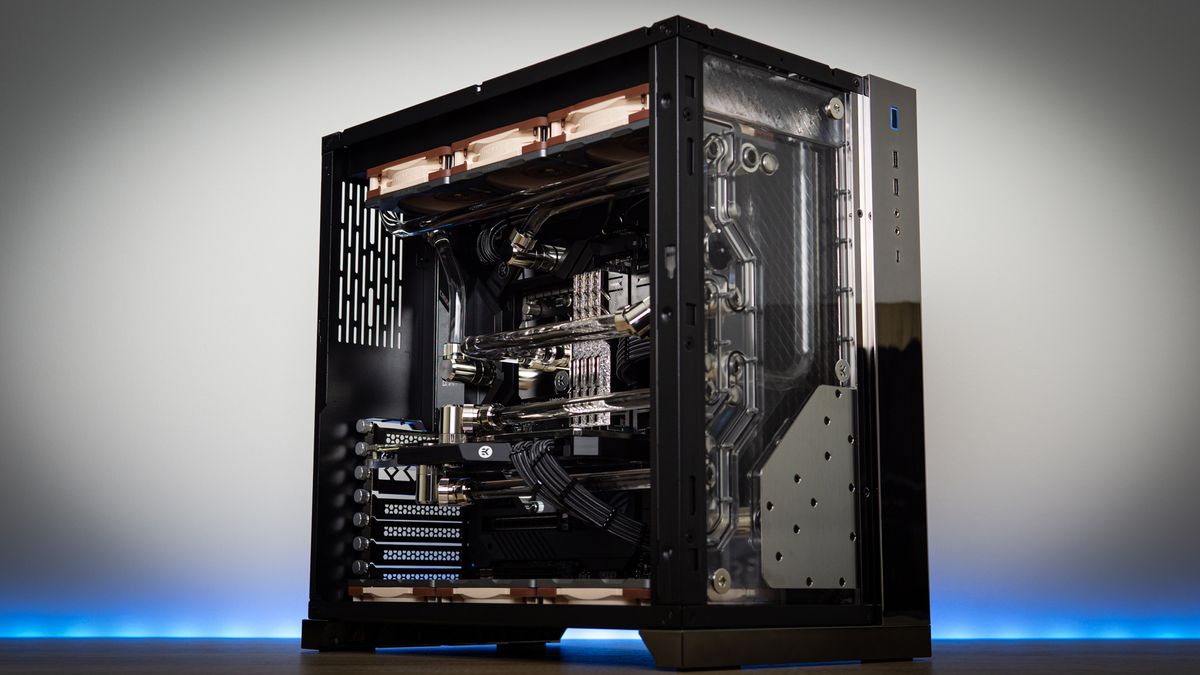
Welcome to the engine room of your high-end gaming PC! The processor, or CPU, is the heart of your rig, pumping life into every game and application. Let’s delve into the battle between Intel and AMD, explore what makes a great gaming processor, and offer recommendations for every budget.
Overview of Current Top Processors (Intel vs. AMD)
In the red corner, we have AMD, known for its powerful Ryzen series. These bad boys offer exceptional multi-threading capabilities, making them a favorite for both gaming and productivity tasks. In the blue corner, we have Intel, famous for its high single-thread performance and impressive clock speeds. The battle between Intel and AMD is fierce, but it means more options for us gamers.
Top Picks:
- AMD Ryzen 9 5900X: A 12-core, 24-thread beast perfect for gamers who also dabble in content creation.
- Intel Core i9-12900K: With 16 cores and 24 threads, this CPU is a powerhouse for gaming and heavy multitasking.
Factors to Consider
When choosing a processor, several key factors come into play:
- Cores and Threads: More cores and threads generally mean better multitasking and performance in multi-threaded applications. For gaming, 6 to 8 cores are usually sufficient, but more can be beneficial for future-proofing and other tasks.
- Clock Speed: Measured in GHz, higher clock speeds can boost your game’s performance, especially in titles that rely heavily on single-thread performance.
- Overclocking Potential: If you’re into squeezing every ounce of performance out of your CPU, look for processors that can be overclocked. Intel’s K-series and AMD’s Ryzen chips are known for their overclocking prowess.
Recommendations for Different Budgets
No matter your budget, there’s a processor out there for you. Let’s break it down:
- Budget Build ($200 – $300): The AMD Ryzen 5 5600X and Intel Core i5-12600K are excellent choices, offering great performance without breaking the bank.
- Mid-Range Build ($400 – $600): Step up to the AMD Ryzen 7 5800X or the Intel Core i7-12700K for more cores, better performance, and a bit of future-proofing.
- High-End Build ($700 and up): If money is no object, go for the AMD Ryzen 9 5950X or the Intel Core i9-12900K. These processors deliver top-tier performance for gaming and beyond.
For a deeper dive into the latest CPUs, check out this comprehensive guide. Whether you’re aiming for budget-friendly or top-of-the-line, choosing the right processor is crucial to building your ultimate gaming machine. Stay tuned for more as we continue to piece together the perfect gaming rig!
Graphics Galore – The Best GPUs for Gaming
Alright, gearheads, it’s time to talk about the star of the show: the Graphics Processing Unit (GPU). If the CPU is the heart of your gaming rig, then the GPU is the soul, delivering those stunning visuals and smooth gameplay that make your gaming experience truly immersive. Let’s dive into why a powerful GPU is crucial, compare the titans of the GPU world, and find the best options for every resolution.
The Importance of a Powerful GPU
Why is a top-notch GPU so important? Simple: it handles all the heavy lifting when it comes to rendering graphics, running complex game engines, and maintaining high frame rates. Without a powerful GPU, even the best CPU will struggle to deliver a seamless gaming experience. A good GPU ensures that you can crank up those graphics settings and still enjoy fluid gameplay, whether you’re exploring vast open worlds or battling it out in fast-paced shooters. Learn more about the role of GPUs in gaming.
NVIDIA vs. AMD: The Great GPU Showdown
In the green corner, we have NVIDIA, renowned for its cutting-edge technology and features like ray tracing and DLSS (Deep Learning Super Sampling). In the red corner, AMD offers a compelling mix of performance and value, with excellent rasterization capabilities and increasing support for ray tracing.
Key Differences:
- NVIDIA: Known for features like ray tracing and DLSS, which use AI to enhance performance and visuals. Great for those who want the absolute best in graphics technology.
- AMD: Typically offers more bang for your buck with excellent performance in traditional rasterization. AMD’s latest RDNA 2 architecture brings strong competition in the ray tracing arena.
VRAM Considerations and Future-Proofing
VRAM (Video RAM) is crucial for handling textures, frame buffers, and other graphics data. More VRAM is especially important for higher resolutions and future-proofing your system. Here’s a quick guide:
- 1080p Gaming: 4-6GB VRAM is usually sufficient.
- 1440p Gaming: 6-8GB VRAM is recommended.
- 4K Gaming: 8GB+ VRAM is ideal for the best experience.
When choosing a GPU, consider not just your current needs but also how it will perform with upcoming games. Future-proofing with a bit more VRAM can save you from needing an upgrade sooner than you’d like. Check out this guide on VRAM and its impact.
Top Picks for Various Resolutions
1080p Gaming:
- NVIDIA GeForce RTX 3060: Great performance at a reasonable price.
- AMD Radeon RX 6600 XT: Excellent value with solid 1080p performance.
1440p Gaming:
- NVIDIA GeForce RTX 3070: A powerful option that can handle high settings and ray tracing.
- AMD Radeon RX 6700 XT: Strong performance with a competitive price tag.
4K Gaming:
- NVIDIA GeForce RTX 3080: Handles 4K gaming with ease, delivering impressive visuals and high frame rates.
- AMD Radeon RX 6800 XT: A great 4K contender with ample VRAM and performance to match.
For the absolute best in class, consider the NVIDIA GeForce RTX 3090 or AMD Radeon RX 6900 XT. These top-tier GPUs are designed for extreme gaming and content creation, offering unparalleled performance but at a premium price.
Want to see more detailed comparisons and benchmarks? Visit this GPU showdown to find the perfect graphics card for your needs.
RAM – More Than Just Memory
Welcome back, fellow gamers! Now that we’ve covered the brains (CPU) and brawn (GPU) of your gaming rig, it’s time to talk about the unsung hero: RAM (Random Access Memory). It’s more than just a storage space for your data; it’s a critical component that ensures smooth gameplay and seamless multitasking. Let’s break down how much RAM you need, the balance between speed and capacity, memory configurations, and the best RAM kits for high-end gaming.
How Much RAM Do You Really Need?
The big question: how much RAM is enough for gaming? The answer largely depends on what games you play and how you use your PC. For most gamers, 16GB of RAM is the sweet spot, providing ample memory for modern games and multitasking. If you’re into streaming, heavy multitasking, or future-proofing your rig, 32GB might be a better choice. Learn more about how much RAM you need for gaming.
Speed vs. Capacity: Finding the Balance
When it comes to RAM, both speed and capacity matter. Higher speed (measured in MHz) can improve performance, especially in games that are memory-intensive. However, the benefits of super-fast RAM often taper off compared to having enough capacity.
- Speed: Aim for DDR4 RAM with speeds of at least 3200 MHz. If you can afford it, 3600 MHz or higher can provide a small boost in performance.
- Capacity: 16GB is sufficient for most, but 32GB offers more future-proofing and flexibility.
Finding the right balance means considering both your budget and your specific needs. Check out this guide on RAM speed vs. capacity.
Dual-Channel vs. Quad-Channel Configurations
Another consideration is whether to go with dual-channel or quad-channel memory configurations. Dual-channel setups involve two sticks of RAM, while quad-channel setups use four. The main benefit is improved bandwidth and performance.
- Dual-Channel: Most common and sufficient for gaming. Easy to set up and cost-effective.
- Quad-Channel: Offers more bandwidth and slightly better performance, but often more expensive and requires a compatible motherboard.
For gaming, dual-channel is usually more than enough, but if you’re building a powerhouse for both gaming and productivity, quad-channel could provide an extra edge. Explore the differences between dual-channel and quad-channel RAM.
Recommended RAM Kits for High-End Gaming
Now, let’s get to the good stuff: our top picks for high-end gaming RAM kits. These recommendations balance speed, capacity, and performance to give your rig the boost it needs.
16GB Kits:
- Corsair Vengeance LPX 16GB (2 x 8GB) DDR4-3200: Reliable performance at a great price.
- G.Skill Ripjaws V Series 16GB (2 x 8GB) DDR4-3600: Higher speed for a bit more performance.
32GB Kits:
- Corsair Dominator Platinum RGB 32GB (2 x 16GB) DDR4-3200: Stylish and powerful, with RGB lighting to boot.
- G.Skill Trident Z RGB 32GB (2 x 16GB) DDR4-3600: Excellent speed and aesthetics, perfect for high-end builds.
For those looking to go all out, consider 64GB kits like the Corsair Vengeance LPX 64GB (4 x 16GB) DDR4-3200 or the G.Skill Trident Z Neo 64GB (4 x 16GB) DDR4-3600. These are overkill for most gaming needs but ideal for multitasking and heavy workloads.
For more detailed reviews and comparisons, visit this RAM buying guide. With the right RAM, your gaming PC will not only run smoother but also handle multitasking like a champ. Stay tuned as we continue our journey to build the ultimate high-end gaming rig!
Storage Solutions – SSDs, HDDs, and Beyond
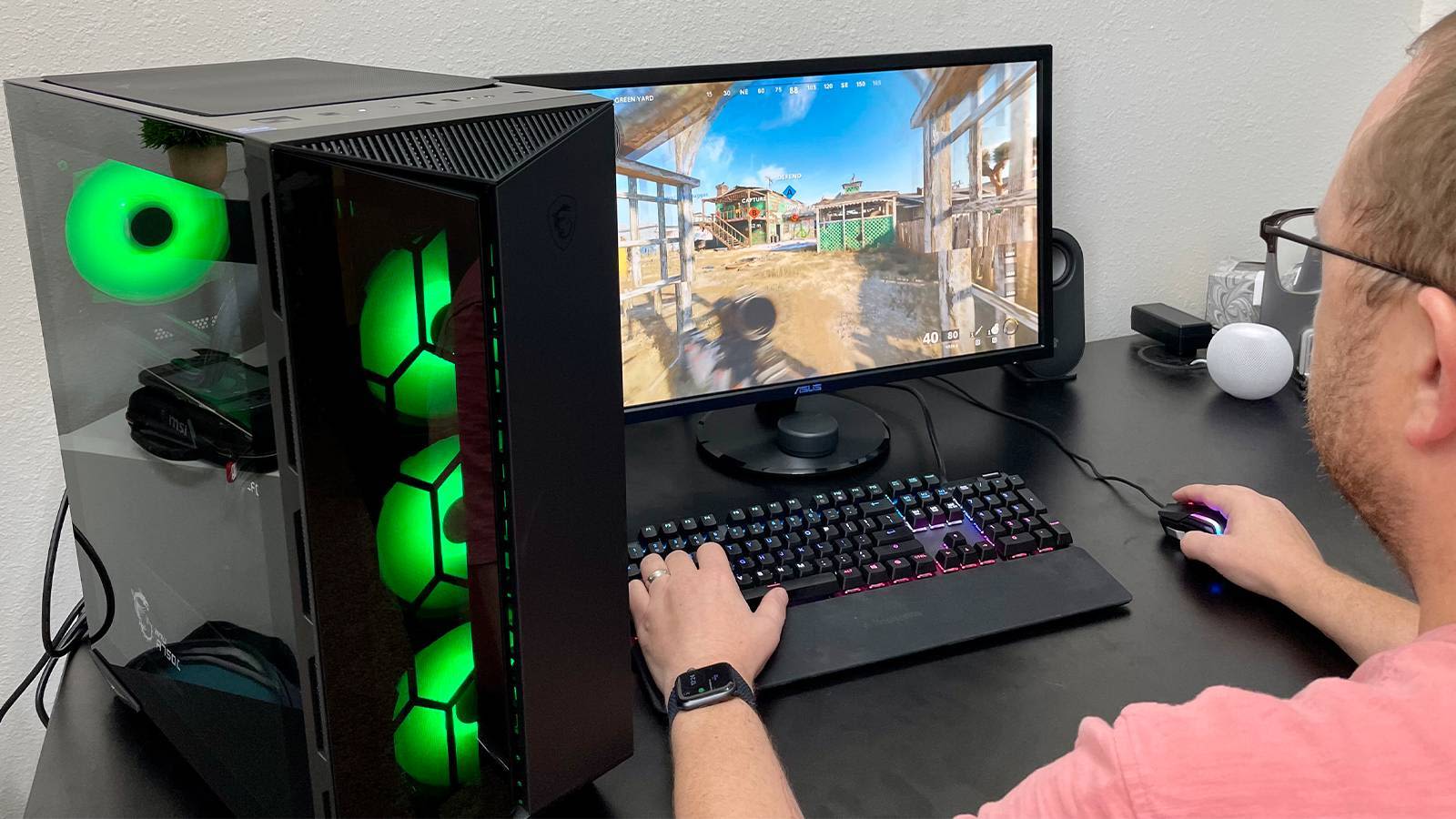
Hey there, storage seekers! It’s time to talk about the foundation of your game library: storage. Whether you’re loading massive open-world games or saving your latest epic victories, the right storage solution can make a world of difference. Let’s dive into why SSDs are a game-changer, the battle between NVMe and SATA, and how to combine different types of storage for the best performance and capacity. Ready? Let’s get started!
The Role of SSDs in Gaming Performance
SSDs (Solid State Drives) are the superheroes of storage. Unlike traditional HDDs (Hard Disk Drives), SSDs have no moving parts, making them faster, quieter, and more reliable. The speed of an SSD can significantly reduce load times in games, allowing you to jump into the action quicker and enjoy a smoother overall experience. Say goodbye to those long loading screens and hello to instantaneous gameplay! Discover more about how SSDs improve gaming performance.
NVMe vs. SATA SSDs: Which is Right for You?
When it comes to SSDs, there are two main types: NVMe (Non-Volatile Memory Express) and SATA (Serial ATA). Here’s a quick comparison to help you choose the right one for your rig:
- NVMe SSDs: These are the speed demons of the storage world. They connect via the PCIe (Peripheral Component Interconnect Express) interface, offering blistering read and write speeds. Ideal for those who crave the fastest performance.
- SATA SSDs: While not as fast as NVMe SSDs, SATA SSDs are still significantly quicker than traditional HDDs. They connect via the SATA interface and are typically more affordable, making them a great option for budget-conscious gamers.
If speed is your priority, go for an NVMe SSD. If you’re looking for a balance between cost and performance, a SATA SSD will serve you well. Learn more about NVMe vs. SATA SSDs.
Combining SSDs with Traditional HDDs for Optimal Performance and Storage
Why choose between speed and capacity when you can have both? Combining an SSD with an HDD is a popular strategy for gamers who want fast load times and ample storage space. Here’s how to do it:
- SSD for OS and Games: Install your operating system and most-played games on the SSD. This ensures fast boot times and quick game loading.
- HDD for Storage: Use an HDD for storing large files, such as videos, music, and less frequently played games. HDDs offer higher capacity at a lower cost per gigabyte.
This hybrid approach gives you the best of both worlds, providing speed where it matters and plenty of storage for everything else. Check out this guide on combining SSDs and HDDs.
Top Storage Solutions for Gamers
Now, let’s get into some top storage picks for your gaming PC. Whether you’re looking for blazing speed or massive storage capacity, these options have got you covered.
NVMe SSDs:
- Samsung 980 Pro 1TB NVMe SSD: Lightning-fast read/write speeds up to 7,000/5,000 MB/s. Perfect for high-performance gaming and content creation.
- WD Black SN850 1TB NVMe SSD: Another speedster with read/write speeds up to 7,000/5,300 MB/s. Ideal for gamers who need top-tier performance.
SATA SSDs:
- Samsung 870 EVO 1TB SATA SSD: Reliable and fast with read/write speeds up to 560/530 MB/s. Great for those who want a dependable SSD at a reasonable price.
- Crucial MX500 1TB SATA SSD: Excellent performance and value, with read/write speeds up to 560/510 MB/s.
HDDs:
- Seagate Barracuda 2TB HDD: Plenty of storage space at an affordable price. Perfect for storing large files and games you don’t play as often.
- Western Digital Blue 2TB HDD: Another solid choice for bulk storage, offering good performance and reliability.
For those looking to push the limits, consider combining an NVMe SSD for your primary drive with a SATA SSD or HDD for additional storage. This setup ensures you have the speed you need for gaming and the capacity for everything else. Explore more top storage solutions.
Power Supply – Fueling Your Gaming Rig
Alright, gamers, let’s talk about the unsung hero of your high-end gaming PC: the power supply unit (PSU). It’s the lifeline that keeps your rig running smoothly, ensuring all those fancy components get the juice they need. Let’s dive into how to calculate your power needs, understand efficiency ratings, and choose between modular and non-modular PSUs. Plus, we’ll share some top PSU recommendations for powering beasts like the RTX 4090.
Calculating Your Power Needs
First things first, how much power does your gaming PC actually need? This depends on your components. High-end GPUs like the RTX 4090 and powerful CPUs can draw significant power, so it’s essential to calculate your total wattage. Tools like the PCPartPicker power supply calculator can help you estimate the required wattage based on your build. For a high-end rig with an RTX 4090, a powerful CPU, and plenty of peripherals, aim for at least a 750W to 1000W PSU to ensure stability and future-proofing.
Efficiency Ratings: 80 Plus Bronze, Silver, Gold, Platinum, Titanium
Efficiency matters! PSUs come with efficiency ratings that indicate how effectively they convert electricity from your wall socket into power for your components. Higher efficiency means less wasted energy and lower electricity bills. The 80 Plus certification is the industry standard, with ratings ranging from Bronze to Titanium.
- 80 Plus Bronze: Decent efficiency, typically around 82-85%.
- 80 Plus Silver: Better efficiency, usually around 85-88%.
- 80 Plus Gold: A sweet spot for most gamers, with 87-90% efficiency.
- 80 Plus Platinum: High efficiency, about 89-92%.
- 80 Plus Titanium: The best of the best, with 90-94% efficiency.
For a high-end gaming PC, we recommend going for at least an 80 Plus Gold rating to ensure reliable performance and efficiency. Learn more about PSU efficiency ratings.
Modular vs. Non-Modular Power Supplies
When choosing a PSU, you’ll come across terms like modular, semi-modular, and non-modular. Here’s what they mean:
- Modular PSUs: All cables can be detached. This allows for cleaner cable management and easier installation, especially in a tight chassis.
- Semi-Modular PSUs: Some cables are fixed (usually the essential ones), while others are detachable. It’s a good balance between cost and convenience.
- Non-Modular PSUs: All cables are fixed. These are generally cheaper but can lead to more cable clutter inside your case.
For a high-end build, especially one featuring a massive GPU like the RTX 4090 in a sleek Alienware chassis, a modular PSU is highly recommended. It helps keep your build clean and improves airflow, which is crucial for cooling. Check out this guide on modular vs. non-modular PSUs.
Recommended PSUs for High-End Gaming PCs
Now, let’s get to the recommendations. Here are some top PSUs that can handle high-end gaming setups, including those sporting an RTX 4090:
- Corsair RM1000x (80 Plus Gold): A 1000W fully modular PSU that offers excellent efficiency and reliability. Perfect for high-end rigs at a competitive price point.
- EVGA SuperNOVA 850 P2 (80 Plus Platinum): An 850W PSU that combines great efficiency with a fully modular design. Ideal for gamers looking for a balance of performance and cost.
- Seasonic PRIME TX-1000 (80 Plus Titanium): A 1000W PSU with top-of-the-line efficiency and durability. This is for those who want the best of the best, ensuring their gaming PC is future-proof.
- Thermaltake Toughpower GF1 850W (80 Plus Gold): Another great option for high-end builds, offering reliable power delivery and a fully modular design.
For gamers looking to build or upgrade a high-end gaming PC with components like the RTX 4090 and an Alienware chassis, these PSUs provide the power and efficiency needed to keep everything running smoothly. Explore more top PSU options.
